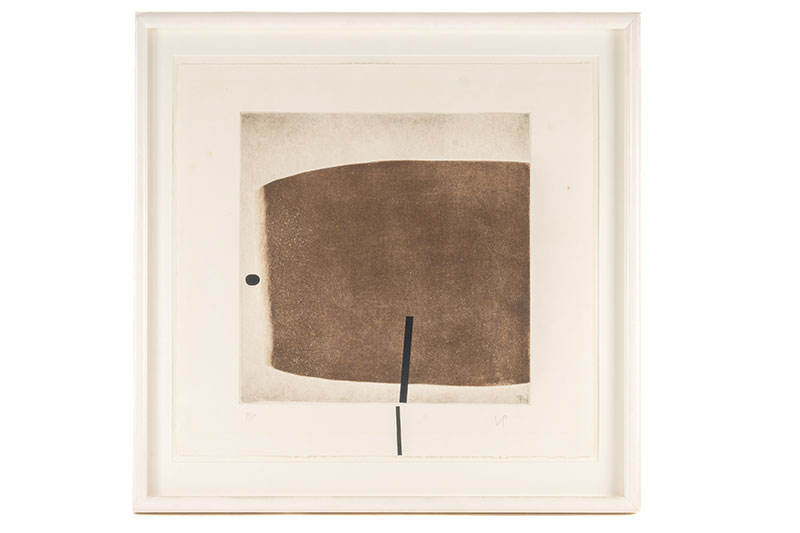A Guide to the Work of Victor Pasmore
Pasmore spoke of how a picture should be viewed as an ‘independent object in its own right'
11/02/2025
Victor Pasmore was a hugely successful and influential British artist, who produced mainly abstract art. He remained active and continued to create right up until his death in 1998. Born in Surrey in 1908 to a physician father and amateur painter mother, Pasmore’s early years have a consistent theme of support and belief in him, from not only his parents, but his school, Harrow, his art college (which he attended at night time whilst also working as a local government officer), and later Kenneth Clark, director of the National Gallery, who bought many of Pasmore’s early works and later became his patron, allowing him to pursue painting full-time from 1938.
Victor Pasmore, Untitled 1974, monogrammed Printer's Proof
Described as the ‘most revolutionary event in post-war British art’ by English art historian Herbert Reed, Pasmore’s work was experimental throughout his career. His early work was born, predictably, from his influences. Having studied late 19th Century French art at Central School of Arts and Crafts, Pasmore’s work featured landscapes and even still lifes – but, crucially, he began to experiment with ‘lyrical abstraction’, which, in layman’s terms, is the attempt to express something personal, subjective, and emotive, in an abstract and poetic fashion.
He did this by adding geometric shapes to his paintings, such as the square and the spiral. Later, he would take this even further, by abandoning the landscapes entirely and focussing just on the abstract elements of the work, generally favouring a white background. As this style began to develop, Pasmore also moved away from the geometric shapes, beginning to favour more curved lines and edges. His work in the 1960s and 70s also began to feature more colour than earlier in his career, and he experimented more with the materials that he used, even painting on materials such as plywood and transparent Perspex.
Pasmore spoke of how a picture should be viewed as an ‘independent object in its own right, not a representation of another object’, and as such his creations are some of the most interesting British works of the time and remain celebrated today. He received significant success during his life, being given positions of influence and respect at various institutions, such as Head of Painting at King’s College at Durham University; Pasmore also was given numerous awards, including the Carnegie Prize in 1964 and a CBE in 1959, and had many touring exhibitions of his work, which included shows at the ICA, the Tate Gallery London and many international venues, which were all met with critical acclaim. This resulted in huge sales, and celebrity status. This acclaim is also still present today – in 2016, ‘Victor Pasmore Towards a New Reality’ opened at Djanogly Gallery in Nottingham to critical acclaim.
The latter years of Pasmore’s life were still spent creating and experimenting. In 1966 he moved to Malta – where he remained until his death. Here, he began working on prints, which in the years since have become even more popular and sought-after than his paintings. Fittingly, Pasmore also returned to painting landscapes as he did at the beginning of his career, being so inspired by the beautiful landscapes around him.
Victor Pasmore RA (1908-1998), 'Linear Development II'
read more
A Guide to the Work of David Hockney
Are you considering selling any art created by Victor Pasmore?
With a global audience of over 10 million known bidders, Dawsons can secure the best prices for you.
Get in touch with an expert Valuer today for confidential sales advice, we would be delighted to help:

.jpg)
,--Linear-Development-II.jpg)